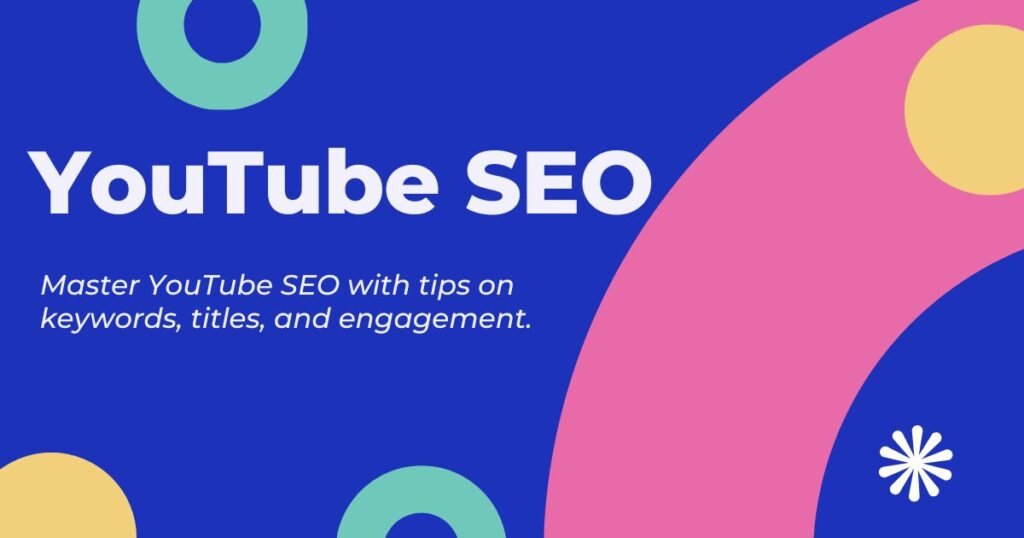Mastering YouTube SEO to Grow Your Channel

YouTube is the world’s second-largest search engine, with over 2 billion monthly active users. If you’re a content creator, that means immense potential to grow your audience. However, with over 500 hours of video uploaded every minute, standing out from the crowd requires more than just great content. It demands a well-thought-out YouTube SEO strategy.
This blog will guide you through the essentials of YouTube SEO, teaching you how to optimize your channel and videos to attract more views, boost engagement, and ultimately grow your channel.
What Is YouTube SEO?
YouTube SEO, or Search Engine Optimization, refers to the practice of enhancing your videos and channel to appear higher in search results on YouTube (and even Google). It incorporates keyword targeting, metadata optimization, engagement tactics, and other strategies that help YouTube understand what your video is about and who it’s for.
A well-optimized video is far more likely to rank for searches, show up as a recommended video, or even trend within your niche.
Why YouTube SEO Matters
If you’ve spent hours crafting a video only for it to get a handful of views, you’re not alone. Among thousands of new uploads every day, YouTube’s algorithm prioritizes content that is optimized for visibility and engagement.
Here’s why improving your YouTube SEO is crucial:
- Better Rankings in Search: Users are more likely to find your content if it ranks higher on YouTube search.
- Added Exposure on Google: Google often displays YouTube videos in its search results, offering another avenue for traffic.
- Higher Viewer Retention: SEO strategies often ensure you’re attracting the right audience, which helps boost watch time, a key ranking metric.
- More Subscribers and Revenue Opportunities: Growing your reach organically through SEO techniques enhances your chances of building a loyal audience and revenue streams.
SEO for YouTube Best Practices
1. Research and Target the Right Keywords
Keyword research is the foundation of YouTube SEO. It helps you identify the exact phrases your audience is searching for.
How to Find YouTube Keywords:
- YouTube’s Search Bar: Type a topic into YouTube’s search bar and review the autocomplete suggestions.
- Keyword Tools: Platforms like TubeBuddy, VidIQ, and Google Keyword Planner provide valuable keyword insights.
- Competitor Analysis: Analyze high-ranking videos in your niche to uncover the keywords they’re targeting.
Look for long-tail keywords (e.g., “how to bake a sourdough bread tutorial”) that are specific and less competitive.
2. Optimize Your Video Title
Your video title is one of the most influential ranking factors. It needs to be catchy, informative, and include your target keyword naturally.
Tips for Optimized Titles:
- Place the keyword at the beginning of your title.
- Use numbers or parentheses for clarity (e.g., “5 Tips for Better Video Editing”).
- Keep it within 60 characters to avoid truncation.
3. Write an Engaging Description
A strong video description not only provides context for your viewers but also helps YouTube’s algorithm understand your video’s content.
Best Practices for Descriptions:
- Include your target keyword in the first two sentences.
- Write a clear summary of the video topic.
- Add timestamps for long videos, helping viewers jump to sections of interest.
- Link to relevant videos, playlists, or external resources.
Example:
“Learn how to bake the perfect sourdough bread with this step-by-step tutorial. We’ll cover everything from mixing the dough to achieving the perfect crust. Want more baking tips? Check out our playlist here [Link].”
4. Use Tags Effectively
While tags are less important than they used to be, they’re still useful for signaling the focus of your video.
How to Use Tags:
- Add your primary keyword as the first tag.
- Include variations and related keywords.
- Avoid stuffing irrelevant terms; it can harm your ranking.
5. Design an Eye-Catching Thumbnail
Thumbnails are critical for click-through rates. An appealing thumbnail can make the difference between someone clicking your video or scrolling past it.
Thumbnail Tips:
- Use bright, contrasting colors that grab attention.
- Include text overlays that summarize the video.
- Feature expressive human faces if possible (close-ups often work better).
6. Leverage Playlists
Playlists can increase watch time by keeping viewers engaged with related content. Organized playlists also help YouTube better understand your content categories and improve rankings.
- Group videos with similar themes or formats into playlists.
- Incorporate keywords in playlist titles and descriptions.
7. Encourage Engagement
YouTube prioritizes videos that drive high levels of engagement (likes, comments, shares, and watch time).
How to Boost Engagement:
- Add a call-to-action (CTA) at the beginning and end of your video (e.g., “If you like this video, hit the like button and subscribe!”).
- Respond to comments to encourage a conversation.
- Include polls, questions, or prompts in your video to inspire interaction.
8. Focus on Watch Time and Retention
Watch time is one of the most significant factors in YouTube’s algorithm. The longer viewers stay on your video, the better it ranks.
Retention Strategies:
- Hook viewers with an engaging intro that promises value.
- Keep content well-paced and concise.
- Use editing techniques like jump cuts, b-roll, and on-screen text to maintain visual interest.
9. Share Across Multiple Channels
Once you’ve uploaded your video, don’t forget to promote it elsewhere to drive traffic.
- Share your video on social media platforms like Facebook, LinkedIn, and Twitter.
- Embed videos in blog posts and newsletters.
- Engage with niche communities on forums or subreddits to share your video where it’s relevant.
10. Analyze Performance and Adjust
YouTube Studio provides valuable analytics that can guide your future content strategy.
Track metrics like:
- Click-through rate (CTR): How well your thumbnails and titles are attracting viewers.
- Engagement rate: Likes, comments, and shares indicate how engaging your video is.
- Audience retention graph: Shows where viewers drop off, helping you identify pacing or content issues.
Take Your YouTube SEO to the Next Level
Mastering YouTube SEO is a gradual process, but with consistent effort, the results are worth it. From better visibility to stronger audience engagement, optimizing your content can help transform your channel’s growth.
Start incorporating these strategies today, and don’t forget to stay updated on YouTube’s evolving algorithm.
Want to learn even more? Download our free YouTube SEO cheat sheet and unlock bonus tips for ranking your videos faster.








